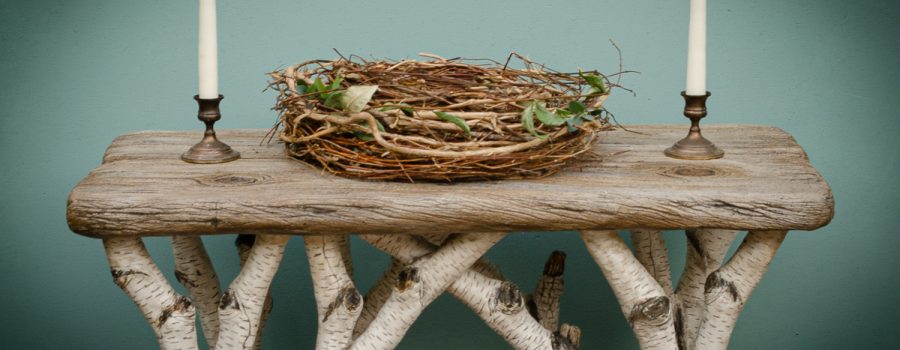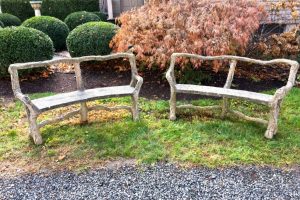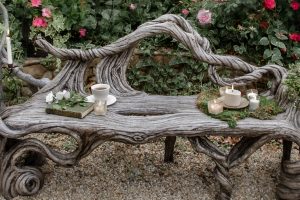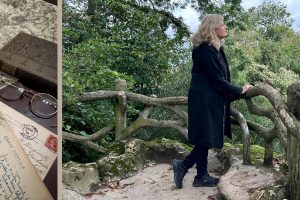I spent a great deal of my childhood wandering around the forests of Northern Michigan. If you’ve never seen groves of white paper birch trees growing wild beside the lakes and streams, well, it’s quite moving. These decorative trees are like angels of the forest, glowing a bright white against the muted greens and greys.
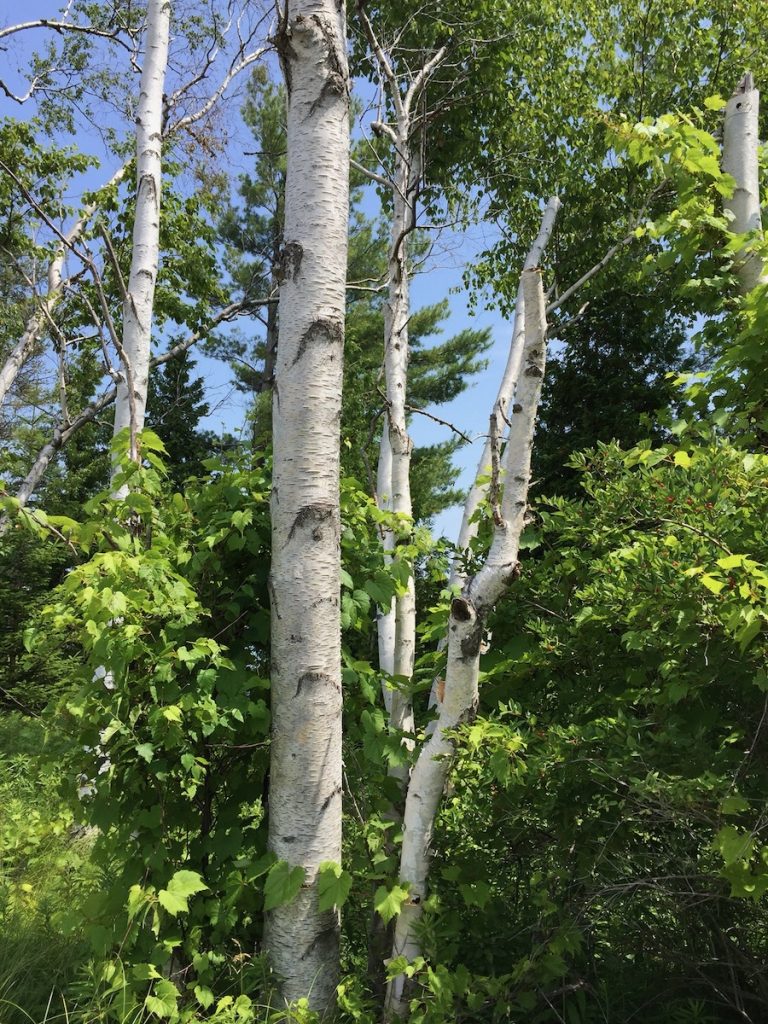
White paper birch trees are like angels of the forest.
On a recent trip up North to visit family and friends, I spent a lot of time communing with nature, gaining inspiration. I decided right then and there to explore the fullness of what it means to be a concrete faux bois artist and teach myself to realistically sculpt the bark of this unique and beautiful tree. I had a vision of faux bois tables that would give collectors that same warm feeling I had as a child wandering the forests, coming face-to-face with something stunning and ethereal.
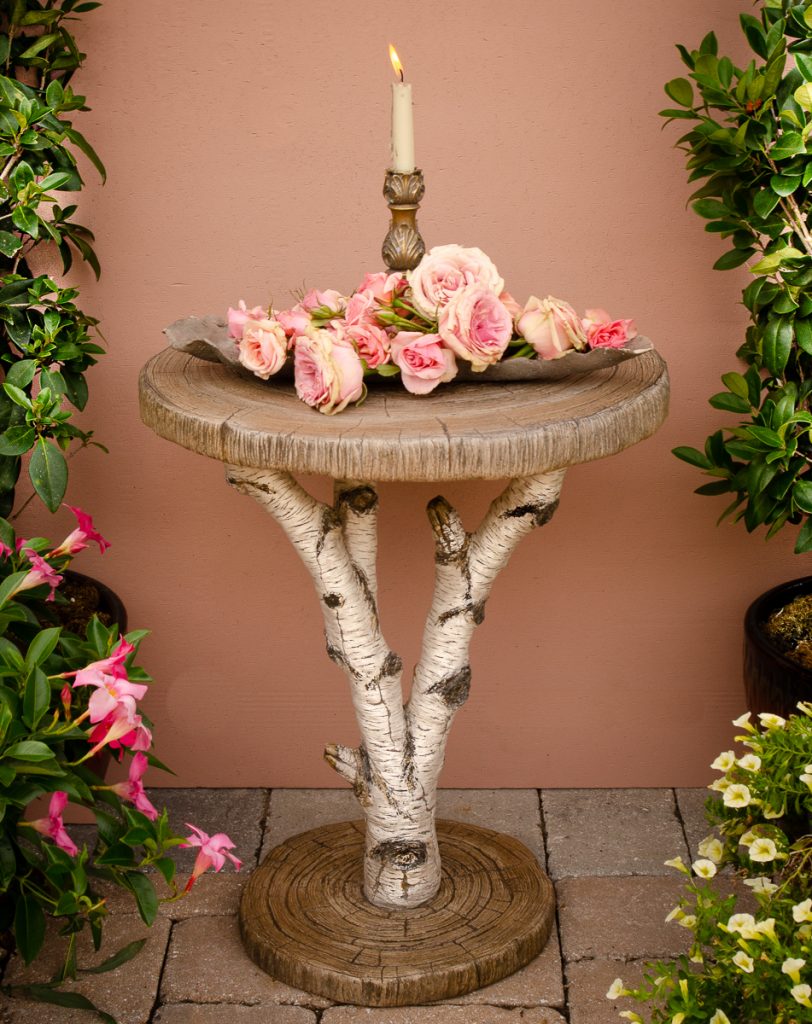
I had visions of faux bois birch tables that would give warm feelings of walking in nature.
I gathered samples of birch branches from my family’s lakefront property to take back to my faux bois furniture studio in Virginia. That was an easy task, since a storm had just blown through the region and there were many downed birch tree limbs. As I studied each of the branches in my gathered-up treasure trove, I fell in love with the uniqueness of the tree knots and the dramatic black and white coloring. I began to make sketches of the faux bois tables I would create. I couldn’t wait to get started!
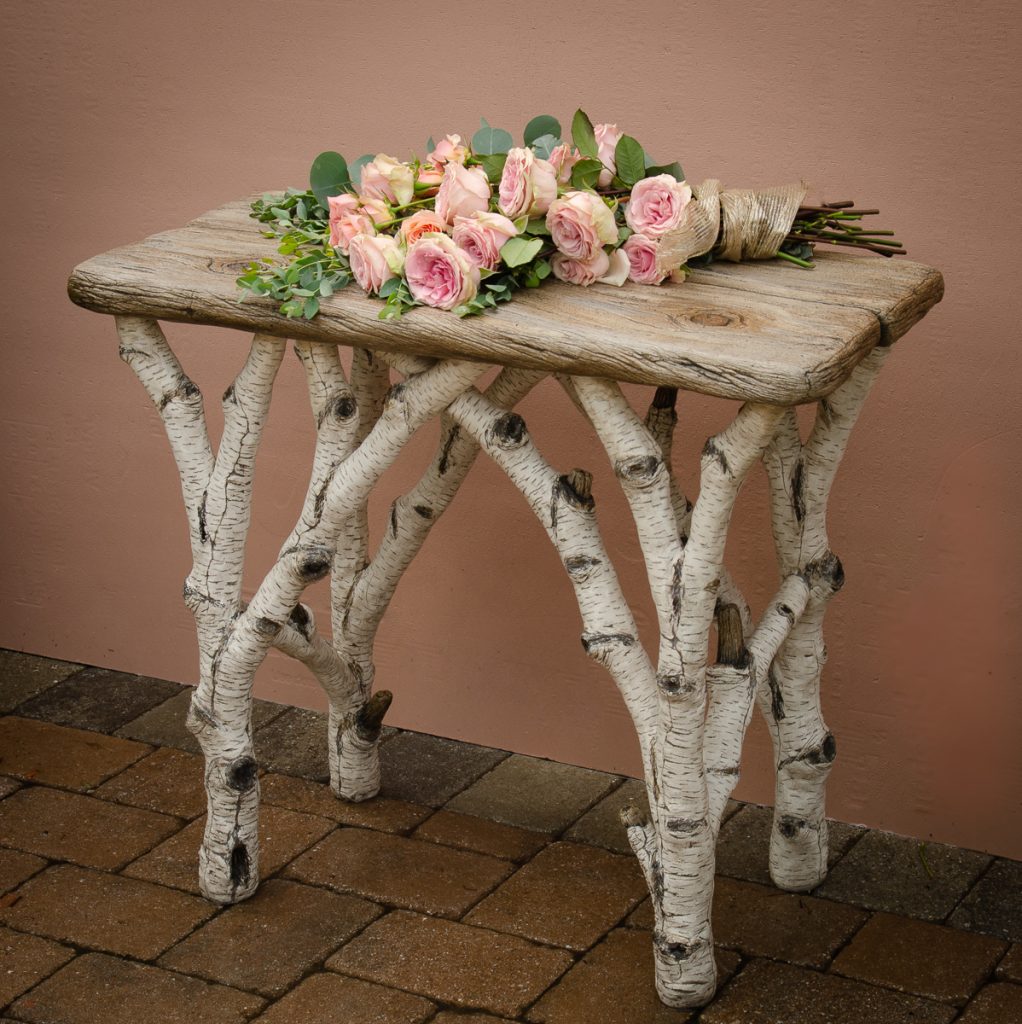
I used birch samples from my family’s property as references when designing this birch faux bois table.
I Love a Good Challenge!
I’ve been a full-time faux bois furniture artist for several years now, making everything from faux bois benches, tables, chairs and other wood grained garden accessories. Creating faux bois birch furniture is unique in the world of faux bois. It would challenge me to set aside my usual sculpting methods and learn an entirely new process.
Instead of integrating brown tones into the cement, I mixed up a rich black color. Since I use a pure white cement mix, I had no problem layering a white bark tone over the black. I set aside wood graining tools used in my more traditional faux bois work in favor of carefully using a sharp razor blade to scribe the cement to recreate the signature slits found in birch bark.
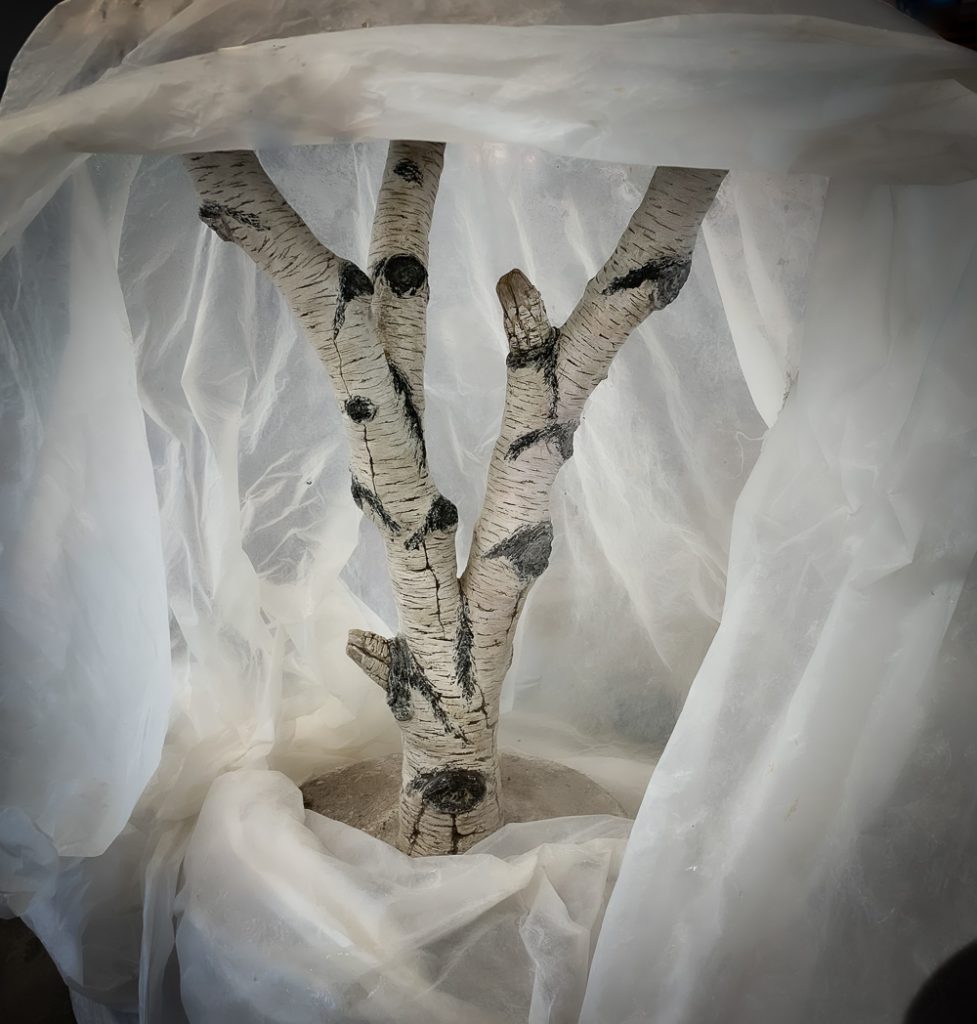
Layers of black and white cement are sculpted to create this faux bois birch table.
My first attempt at birch faux bois was not close enough to my vision, so I applied another coat of cement and sculpted the branch again until it was to my liking.
My husband Emile thought the first attempt was pretty good and asked me, “What standard are you trying to reach?” Without hesitation, I replied, “I want it to look so real that it would fool even me, even up close.”
Though I still love traditional wood graining involved in the making of most of my faux bois benches, tables and other furniture, I certainly have been enjoying creating birch faux bois tables for the appreciative collectors living in Northern Michigan! What will I create next resembling faux bois birch? Leave a comment below and let me know what you would like to see!
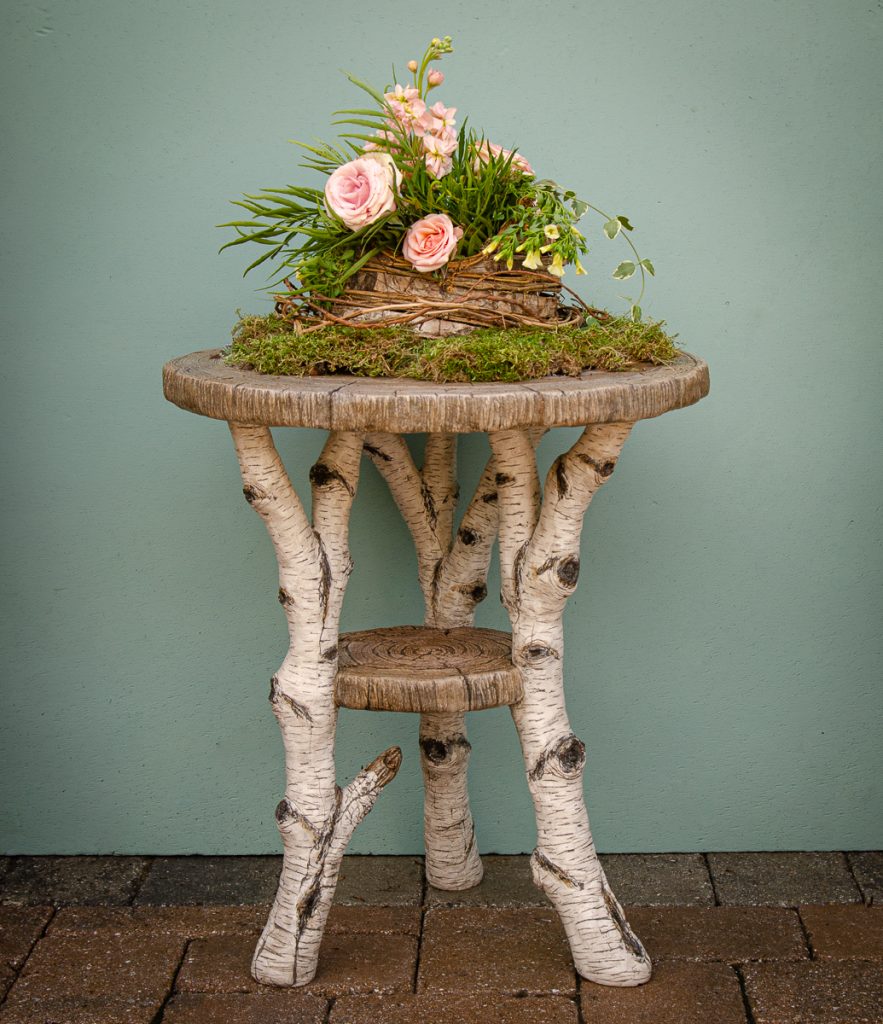
This birch faux bois table found a home in Northern Michigan.
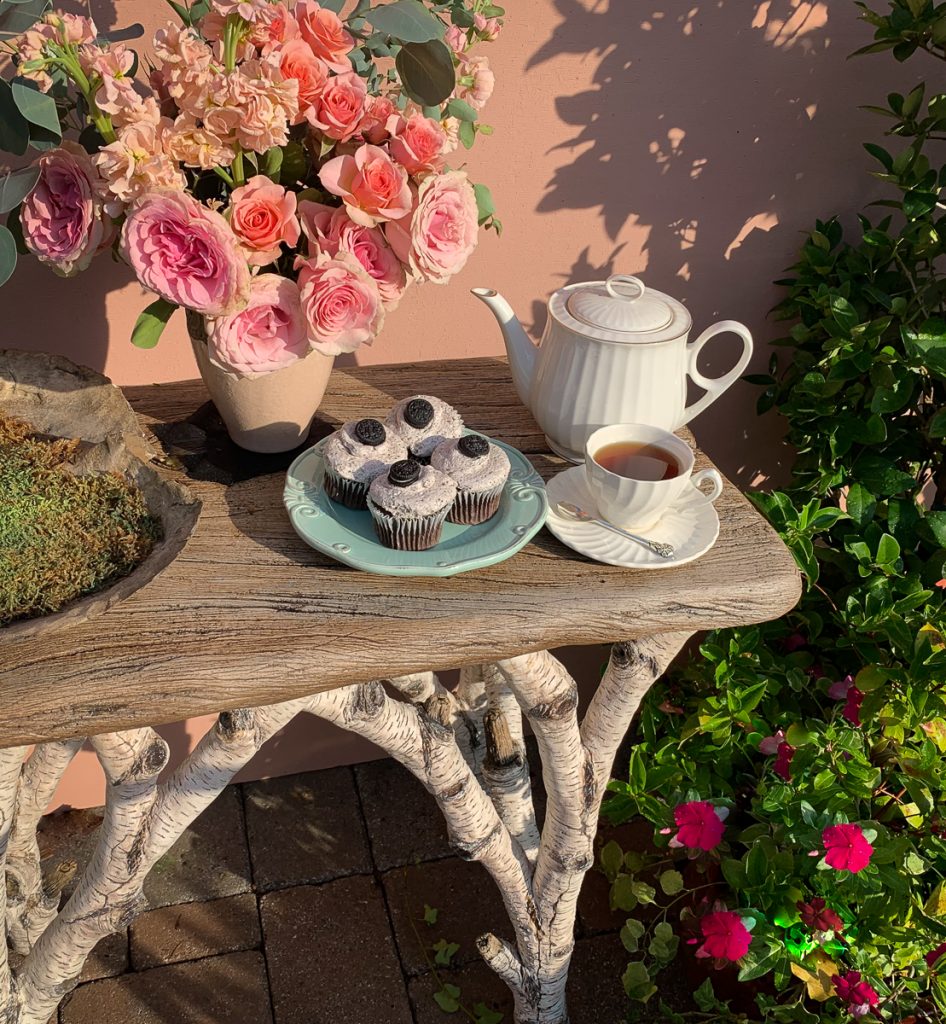
Faux bois birch is both durable and elegant.
